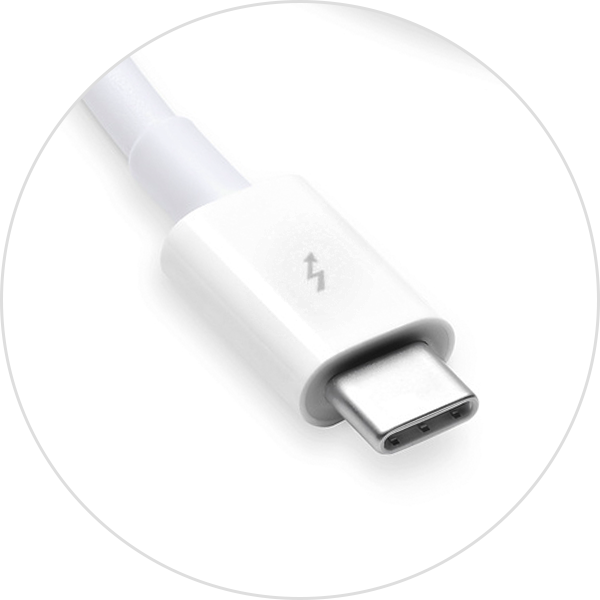
We do need something to walk around this issue. So for all that people like me that is already using the thunderbolt output, this is not a solution. Then I started some investigation, and found that this adapter will not work, because this computer does not provide power in the HDMI connector, and therefore it will not work because it has no power to convert and decode HDMI signal. Tried unplugging and reconnecting with no good result. Apparently the monitor detects the connection, the computer detects something is being connected but NO-SIGNAL warning appears in the Packard Bell monitor.
#Adapter to connect macbook to monitor mac#
Now I upgraded into a new Mac Mini, I7, 16GB RAM, and obviously replaced it just like it was.
#Adapter to connect macbook to monitor pro#
=> Through HDMI output using a KANEX ATV PRO HDMI > VGA converter. (1) Apple Led Cinema Display - 24" => Through MDP output. I have an old (2010) Mac Mini, that I was using up to last week, with two monitors:

I think we need to dig a little bit more in this issue. So, while the Apple-supplied HDMI to DVI adapter will drive a DVI monitor, it doesn't carry any of the analog signal necessary to drive a VGA monitor, because the HDMI connector is lacking that signal in the first place. That's why a passive DVI to VGA adapter worked in the past.Īlas, HDMI is fully digital it has no analog signal. The "standard" kind of DVI (in the sense that it's the kind used on Apple's DVI connectors in the past) is called DVI-I (integrated), meaning it integrates both digital and analog signals. It's compatible with DVI displays, but it lacks the analog VGA signals, which are absent from the HDMI connector. The kind of DVI signal that you get on the end of the Apple-supplied HDMI to DVI adapter is DVI-D (digital only). Apple's Mini DisplayPort to VGA adapter is all that's necessary to connect a VGA monitor to the Mac Mini via the Thunderbolt port:Īs it turns out, there really ARE different kinds of DVI. Thunderbolt is backwards-compatible with Mini DisplayPort. Rather, the Thunderbolt port is the way to go if you need to connect a VGA monitor.

In case anyone else has the same question, the solution doesn't lie with the HDMI port at all. And if DVI converts to VGA (which it does.I've done it many times), how can the + path not work?Īre there "different kinds" of DVI signals - namely, the kind that can be converted to VGA, and another kind that can't be converted to VGA? If Apple's HDMI to DVI adapter works then it should just provide DVI at the DVI end of the adapter.

I don't know enough about it to say whether it's workable, but something doesn't add up.

I've read that some folks have had difficulty connecting VGA monitors to the Mac Mini - something about the HDMI signal not accurately translating to VGA with passive adapters. Unless I'm missing something (definitely possible), it would seem that the most direct method of connecting the monitor would be to use a DVI (M) to VGA (F) adapter plug the DVI side into the Apple-supplied HDMI to DVI adapter, and then use the VGA side of the adapter to connect the monitor. I assume that the DVI side of the adapter is a standard DVI (F) female connector, which will accept a standard DVI (M) male connector. The Mac Mini comes with an "HDMI to DVI adapter" (Apple's description), but I can't find any other information about that adapter on the Mac Mini description pages, nor can I find any photos of the adapter. I'm replacing the old iMac with a new Mac Mini, which has only Thunderbolt and HDMI connectors available. I'm currently using it with an old iMac G4 (Gumdrop) via a mini-display to VGA adapter cable. I have a perfectly good LCD monitor that has a VGA connector on its input cable.


 0 kommentar(er)
0 kommentar(er)
